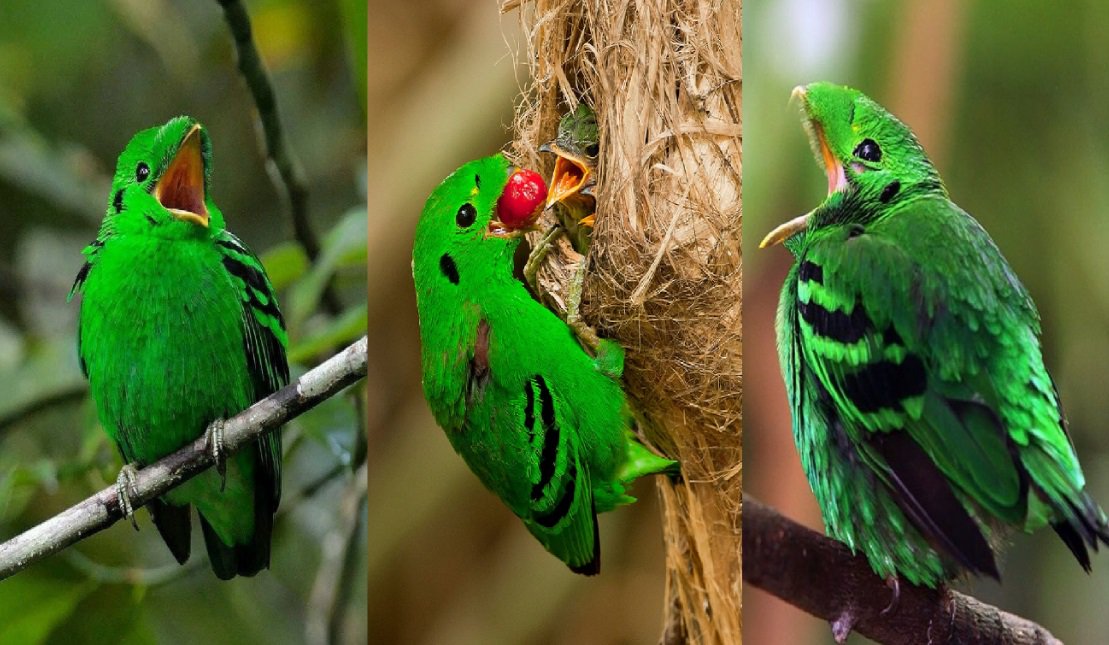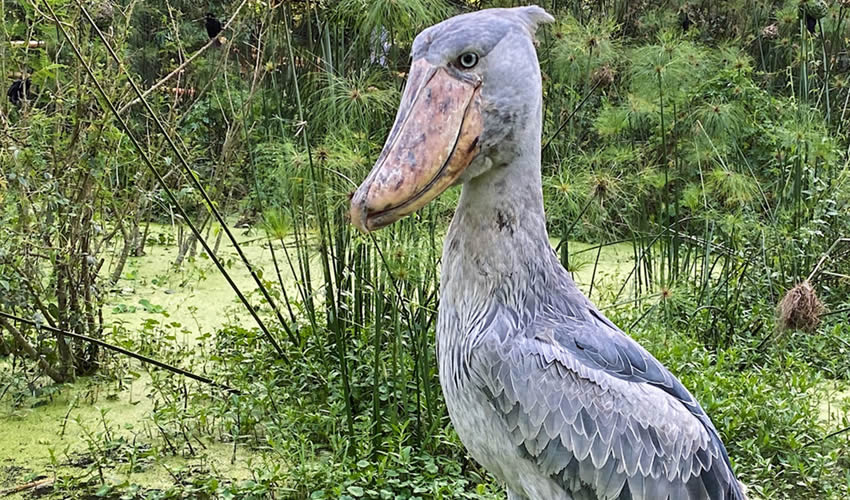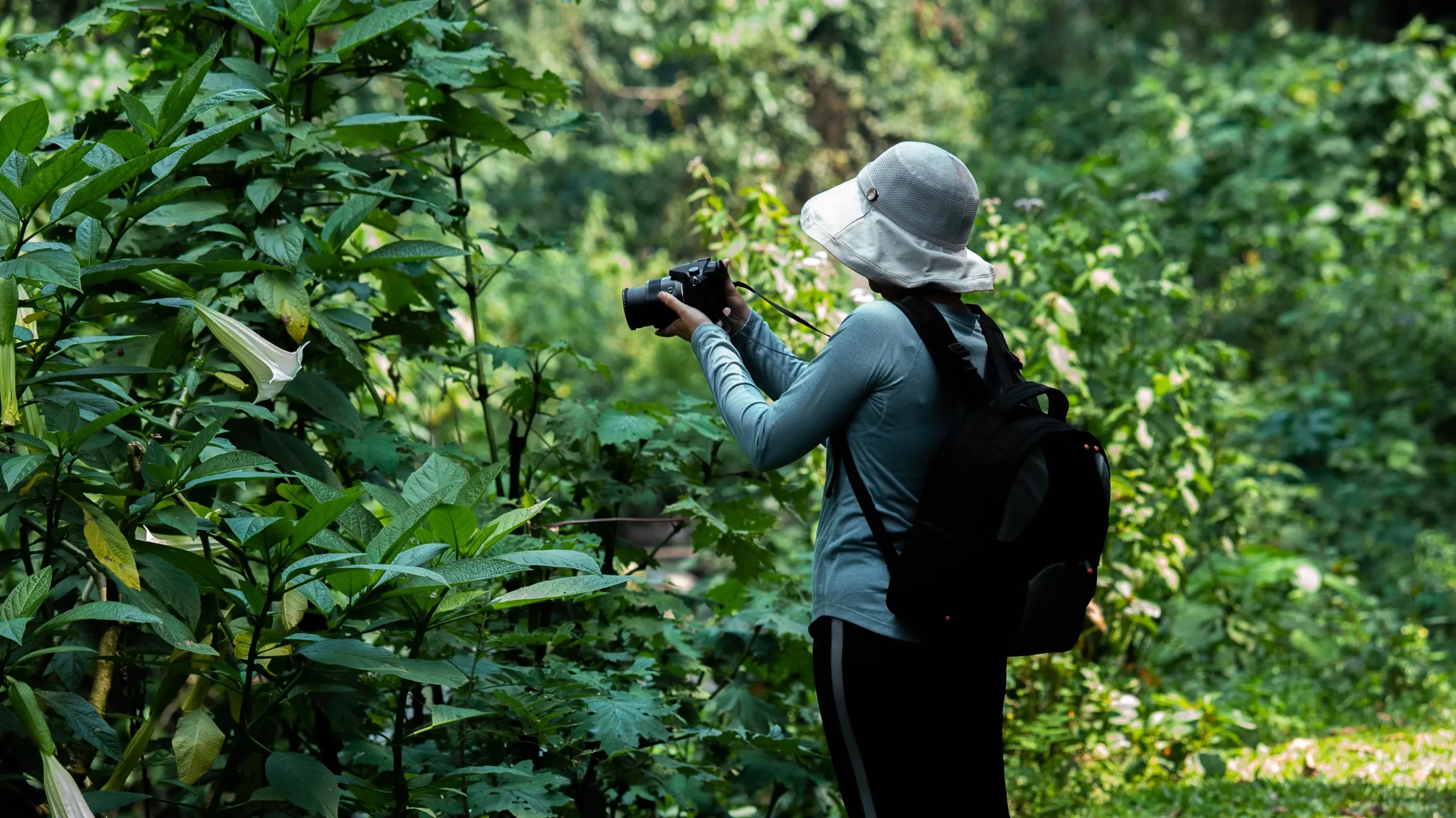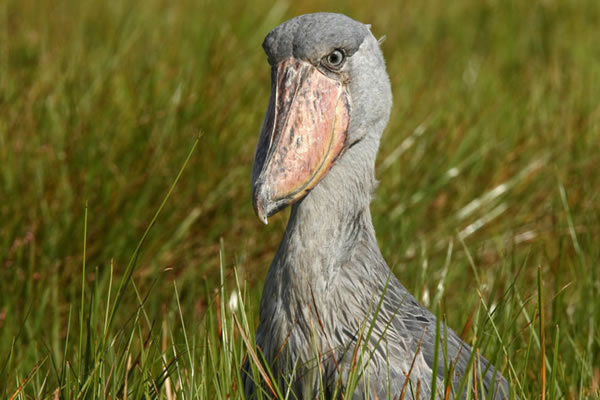Bird Watching in Uganda
Bird Watching in Uganda: At almost every level, the sheer variety of bird species in Uganda is daunting. This is not only for first-timers to Africa, but also for bird enthusiasts familiar with other parts of the continent. Uganda is a birding paradise boasting a massive bird list of more of than 1090 recorded bird species. Again, making up 50% of Africa’s bird species and 12% of the world species.
This huge bird list is contained within a small territory of only 90041 square miles. (about the size of Britain). Hence having one of the highest concentrations of birds per square kilometers in Africa. Birding in Uganda rewards with easy spotting of many birds. Moreover covering just a small area or birding for a short period of time.
It is also home to 24 of the Albertine rift endemics. By comparison with the rest found in DR Congo, Rwanda, and Burundi. Birds were protected over the years because of the cultural norms attached. For example being totems for clans or believed to communicate messages from the gods and seasons.
Bird spices most spotted in Uganda
Uganda gorilla trekking is the reason most people visit. But the country is also a bucket list destination for bird watching. You’ll find over 1090 species of birds in Uganda. Bird Watching in Uganda is simply a delight for opportunistic birdwatchers. Read on for information about the best-spotted birds in Ugandan. Below are the 10 spotted birds in Uganda
Shoebill
The Shoebill Stork is classified as a giant stork together with the Saddle-billed Stork and Marabou Stork. In addition, its taxonomic name is Balaeniceps rex. As mentioned above the Shoebill Stork has a prehistoric look and you its easily pictured together with the dinosaurs. Meanwhile bird’s most distinct future is its massive bill that has a clog shape and sharp hook at the tip. It is a tall bird measuring around 115 cm.

More so, the Shoebill Stork’s preferred habitat is permanent peaceful swamps. This is where it is spotted standing watching for fish. In addition, it is always wading around or flying slowly above the swamp. It is an ambush feeder that can stand around for a long time in shallow water waiting for prey.
Green-breasted Pitta
A spectacular short-tailed upright bird with a distinctive bottle-green breast. It is a black-and-buff head, a white throat, a scarlet belly. This bird is also shiny blue-spotted wings and rump. A scarce resident of dense lowland forest, usually skulking in pairs in leaf litter on the forest floor. Breeding birds call and display in the canopy. Most often found when giving a di-syllabic “brrr-rrrt” wing drum display as the male hops up lasting less than a second. Furthermore, also gives a bell-like whistled “huuu” call. African Pitta is similar to Green-breasted but has a warm buffy breast.
African Green Broadbill

It is a small, plump bird, with bright grass-green plumage. More so, it has a pale blue tinge to the throat, breast, base of the short tail and the feathers covering the ears. The forehead is buff, finely streaked with black, and a narrow black stripe runs through the eyes. The wide, flattened and slightly hooked bill is black as are its claws. In Uganda these are best spotted in Bwindi Impenetrable National Park.
Great Blue Turaco
The Great blue turaco is the largest species of turaco family endemic to Africa. It has a bright blue body, rounded wings, long tail, and strong legs. Both the males and the females are similar in appearance. In addition, their coloration doesn’t change throughout the year. These are spotted in Kibale National park in Uganda
Shelley’s Crimsonwing
A spectacular, distinctive, enigmatic waxbill with a red bill and upperparts. It is an olive throat, orange flanks, and black wings. Sexes differ: male is red from forehead to nape and female is olive. Juvenile is like the female, but lacks orange flanks. In Uganda these Birds are found Rwenzori Mountains National Park and Bwindi-Impenetrable National Park.
Standard-winged Nightjar
Iris dark brown, bill blackish, legs and feet dark brown. Smaller than C. vexillarius; female slightly smaller and paler with paler nuchal collar and shorter. This bird is characterised by the central flight feathers that appear during breeding season on the males. Raised vertically during display, it is a dream come true to see these birds during this short time span when their feathers can stretch up to 38cm in length.
Short-tailed Warbler
A Short Tailed Warbler is a bird species of a Warbler family. Again, commonly known as Neumann’s warbler that is in the montane forest of Bwindi Impenetrable Forest National Park. Short tailed like moving in the middle levels and on the ground. But it doesn’t go to the forest canopy
Doherty’s Bushshrike
A strikingly colored, medium-sized bush shrike. The adults is mostly green with a bright red forehead and throat. Furthermore, it has a broad black breast band and a bright lemon-yellow belly. Its tail is black. Young birds are pale green above with finely barred yellow-green underparts. These are spoted in Mgahinga Gorilla National Park, Echuya Forest Reserve, Bwindi Impenetrable National Park and Mount Elgon National Park.
Bar-tailed Trogon
Typically, beautiful green-and-red trogon. The bottom of the tail is heavily barred black-and-white. Moreso, this pattern is also along the edges of the top of the tail. Found in moist montane forest. So if you are on a trip to Bwindi Impenetrable National park, take a chance to watch this elusive bar-tailed trogon.
Black-breasted Barbet
Large, mostly black barbet with a huge white bill. Note the black breast and the red, white, and black belly. Found locally in savanna, woodland, gardens, and secondary growth, Bird Watching in Uganda. Often in the vicinity of figs and other fruiting trees. Usually in pairs or small groups. Gives rasping calls and a nasal yelping call. Somewhat similar to Bearded and Double-toothed Barbet. But easily separated by the black rather than red breast. This bird is seen at Mabamba bay, Lake Mburo National Park, Murchison Falls National park and Zziwa Rhino sanctuary
Best places to spot Birds in Uganda
Uganda is ranked as one of the top 10birding destinations in the world. It has over 1090 bird species that are recorded in the country. More so, wide variety of bird species in Uganda is what makes the country a renowned birders’ paradise. This is on the African continent and in the world at large. These are the destinations in Uganda most known for birdwatching.
Mgahinga Forest
Birding in Mgahinga National Park was gazetted in 1991 and is part of the thMgahinga National park is good for birding all year round. in addition, Bird watchers have a decent birding experience at any time of the year. But the best time is April to Mid-may and October to November Virunga conservation area. It is perhaps, Uganda’s most scenic national park.
Mgahinga now has a record of 115 bird species which makes for interesting bird watching. Notable birds and birding specials include the White-necked raven, Black kite, Pin-tailed whydah, Double-collared sunbird, Speckled mouse bird, Paradise flycatcher, Ibis, Whydah, Speckled Mousebirds, Fire Finch Stonechat, Grey Capped Warbler, Waxbills, Yellow-Vented Bulbul. Alpine chat, Alpine, Archer’s robin-chat, Blue-headed coucal, Dusky crimson wing, Olive pigeon, Olive woodpecker, Ruwenzori batis, Ruwenzori nightjar, Ruwenzori turaco.
Mountain Elgon National Park.
Mountain Elgon National park is the home to 300birdspecies, being a great Uganda birding safari destination, 56 of the 87Afro-tropical highland biome species live here, notably the Moorland Francolin, Moustached Green Tinkerbird and Alpine chat.
Birding in mountain Elgon is one of the greatest activities in mountain Elgon National Park, especially for birders who would love to trailor birdwatching and hiking. Other species spotted while birding in Mount Elgon National Park include; the African Goshawk, Chubb’s Cisticola, White-chinned Prinia, Bird Watching in Uganda, African Blue Flycatcher, Chinspot Batis, Mackinnon’s Fiscal, Dohertys Bushshrike, Luhders Bushshrikes, Baglafecht Weaver, Cinnamon Bee Eater, Moustached Tinkerbird, Hartlaub’s Turaco, Tacazze sunbird, Olive-naped pigeon, Bronze-naped pigeon, Black kie, Black-collared Apalis among others.
Masambwa island
It is dawn at Musambwa Island, the world’s largest breeding colony for tens of thousands of grey-headed gulls, in Uganda’s Southern region. The chirping birds are uninterrupted as they happily jump from corner to corner of rocks and trees. A fleet of gulls takes to the air while others remain to guard their nests, eggs and the babies. The island is home to100 bird species. It is estimated that about 200,000 birds live and breed on the island. Apart from the Grey-Headed Gulls, there are Little Egrets, Greater Cormorant, Long-Tailed cormorant and the black crake.
Others are White-winged Black Tern, Sacred Ibis, Egyptian Goose, Spur-winged Plover, Cattle Egret, Lesser Black-backed Gull, Grey Heron and Common Moorhen to mention in addition to snakes and pythons.
Queen Elizabeth National Park
Queen Elizabeth National Park has the largest checklist of any protected area in East Africa with more than 600 bird species recorded. This is mostly due to the wide variety of habitats: from savannah to forest to wetland. Many of the birds in the park are regarded as specials within East Africa, which make it a prime birding destination. The swamps in the Ishasha sector are a good place to look for the elusive shoebill stork. Migratory birds are present from November to April.
Birds in Queen Elizabeth National Park incluse; reats for Avid Birders, African finfoot, African hobby, African skimmer, Ayres’s hawk eagle, Black bee-eater, Black-rumped buttonquail, Broad-billed roller, Caspian plover, Collared pratincole, Common sand martin, Crab-plover, Great blue turaco,Great white pelican, Grey-winged robin-chat, Heuglin’s gull, Palm-nut vulture, Papyrus gonolek, Pel’s fishing-owl, Pink-backed pelican, Red-chested sunbird, Rufous-bellied heron, Shoebill, Spotted redshank, Western banded snake eagle, White-backed night heron, White-winged tern, Yellow-bellied wattle-eye, Yellow-throated cuckoo
Bwindi Impenetrable National Park
Bwindi should be on every birder’s itinerary. The park offers some of the best montane-forest (mountain-forest) bird watching in Africa. There are an estimated 350 bird species, with 14 not recorded anywhere else in Uganda. There are 23 birds unique to the Albertine Rift (which is 90% of all Albertine Rift endemics), including Neumann’s warbler and blue-headed sunbird. Migratory birds are present from November to April.
Further, the major bird species to see in the Bwindi Impenetrable National Park include: Handsome Francolin, African Wood Owl, Rwenzori Nightjar, Bar-tailed Trogon, Black Bee-eater, Western Green Tinkerbird, Dwarf Honeyguide, Bird Watching in Uganda, Fine-banded Woodpecker, African Green Broadbill, Grey Cuckoo-shrike, Shelly’s Greenbul, Yellow-streaked Greenbul, Red-throated Alethe, Archer’s Robin-Chat.
More Birds in Bwindi
More so, White-bellied Robin-Chat, Kivu Ground-Thrush, Mountain Yellow Warbler, Grauer’s Rush Warbler, Red-faced, Woodland Warbler, Short tailed Warbler, Black-faced Rufous Warbler, Grauer’s Warbler, Chestnut-throated Apalis, Collared Apalis, Mountain Masked Apalis, Yellow-eyed Black Flycatcher, Chapin’s Flycatcher, Rwenzori Batis, Strip-breasted Tit,Tit Hylia, Purple-breasted Sunbird, Blue-headed Sunbird,Regal Sunbird among others.
Semuliki National park
Birding in Semuliki National Park Uganda offers one of the best Africa bird watching experiences. While birding Semuliki National Park you may be able to spot some of the birds which includes; Congo Serpent Eagle, Long-tailed Hawk, Nkulengu Rail, Black-wattled Hornbill and Lyre-tailed Honeyguide, Ituri Batis, Red-billed Helmet -Shrike, Red-eyed Puff-back, Black-winged Starling, Maxwell’s Black Weaver, Blue-billed among others.
Lake Mburo National Park
More than 310 bird species have been recorded in Lake Mburo National Park. This park is the best place in Uganda for acacia-dwelling birds. Forest species are also present in Rubanga Forest. A bonus for birders are the swamps, in which six papyrus specials are resident, including the spectacular papyrus gonolek and the blue-headed coucal.
Southern species at the northern limit of their range include the black-collared barbet and bare-faced go-away bird. In addition, Migratory birds are present from November to April; African finfoot, African scops owl, Bare-faced go-away bird, Blue-breasted kingfisher, Blue-headed coucal, Brown-chested lapwing, Carruthers’s cisticola, Greater painted-snipe, Hairy-breasted barbet, Mosque swallow, Papyrus gonolek, Papyrus yellow warbler, Red-faced barbet (NE), Shoebill among others.
Kidepo Valley National Park
Kidepo Valley national park is a great destination for travelers who love to have vacations in wilderness areas with only the whispers of the wild. Furthermore, It has a lot to offer to those with much love and interest for birds. Kidepo valley national park is the second park in Uganda in hosting a high number of birds after Queen Elizabeth national park. there are about 612 bird species in queen Elizabeth national park and 470 bird species in kidepo valley national park with 60 endemic species in the country. Ostriches are the one of the commonest bird species in Kidepo Valley National Park.
Other bird species in Kidepo valley national park are the Dark chanting goshawk, black breasted barbet, Abyssinian roller, Abyssinian scimitarbill, Fan-tailed raven, Mosque swallow, Golden pipit, Brown-backed woodpecker, Karamoja Apalis, Jackson’s hornbill, Purple grenadier, Red-winged lark, White-faced scoops, Rupell’s sterling, Superb sterling, White-bellied tit, Rufous chatter, Ethiopian swallow, Brown-rumped bunting, Vinaceous Dove, Hoopoe, Chesnut-crowned sparrow weavers, Bruce’s Green Pigeon, Violet-tipped Courser, Fox Kestrel and the White-billed buffalo weavers among others.
Lake Busina & Opeta
Lakes Bisina and Opeta are the eastern extensions of the Lake Kyoga and are some of the few places in Uganda to spot different endemic species of birds found in Uganda including the fox’s weaver. Much there are no tourist facilities at the site, they can be explored by tourists traveling to or from Mount Elgon National Park or towards Moroto as well as for a day when from Mbale or Soroti. Lake Bisina is more accessible of the two places along a nice dirt road which turns north off the Mbale-Soroti main road at Kapiri, at approximately 20 kilometers south-east of Soroti Town.
You will then continue along the road up to the edge of Lake Bisina and there are local fishermen who take tourists across to the north-western side where several Fox’s weavers. These birds are usually many during the rainy season especially in March and April much as there are few that are spotted throughout the year
Lake Busina and Opeta
Lake Busina and Opeta are known habitat to exceptional bird species such as the handsome silver bird, Jackson’s Hornbill, Brubru and Eastern Vilet-backed Sunbird, Fawn-colored Lark, White-bellied Go-away Bird, African Grey Flycatcher, Pygmy Batis, Yellow-bellied Eremomela, Mouse-colored Penduline Tit and many others. When you continue south from the junction for approximately 5 kilometers, you will find the Dark Chanting Goshawk, beautiful Black-headed plovers, Yellow-necked Spur fowl and the Crested Bustard while the Temminck’s Courser, D’Arnaud’s Barbets and the Grey Wren Warbler are commonly spotted at the airstrip near Town.
Mountain Rwenzori National Park
Rwenzori Mountain National park vaunts a total of 217 species of birds recognized. 8 of these are limited to species of the albertine endemics which is only second to Bwindi impenetrable forest that has 24 restricted range species of the birds. Rwenzori mountain national park has got 60 of which 86 afro tropical highland biome species and is second to Bwindi impenetrable forest.
These also include; Rwenzori Turaco, Bird Watching in Uganda, the Bamboo Warbler, Golden Winged sun bird, Scarlet tufted malachite Sun bird as well as Stuhlmann’s double collared olive back, Long eared owl, Archers’ Robin-chat, Lagden’s Bush Shrike, Blue-headed and Golden-winged sunbird, white-starred Robin, Slender-billed Starling, and Cinnamon-chested Bee-eater.
Uganda is arguably the most attractive country in Africa to bird watchers ( tour), not only to because of the unusually number of species recorded within its borders, but also because it offers easy access to several bird-rich habitats that are difficult to reach elsewhere.
Always inquire from Umarella Voyage Safaris for any birding Safaris in Uganda.



